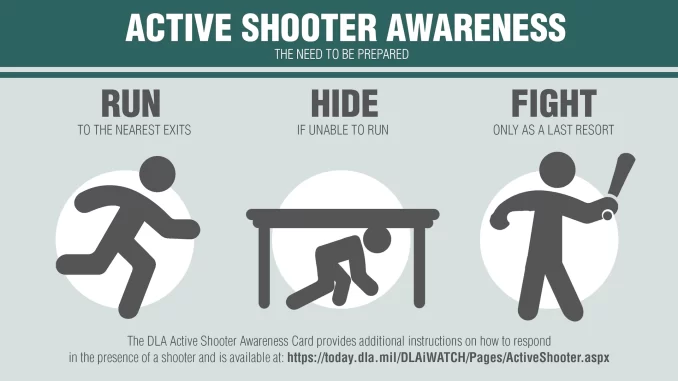
By: Litzi Duran
Contributing Writer
Growing concerns across the country are rising over the effectiveness of active shooter protocols and the ability of campuses to react, in the wake of mass shootings at colleges and schools in Michigan and Tennessee.
People can get into Dominican buildings through 64 outdoor entrances on campus.
Director of Campus Safety, Sasha Santiago, explained that for most entrances a Star Card ID is needed, like Parmer or the Fine Arts buildings.
“We want to be open and welcoming, but we [have to] weigh that with the reality of life in 2023,” said Santiago.
With the Star Card ID system, the dispatch team is able to shut down the exterior card readers once they get a message confirming an active threat, Santiago said.
RAVE Mobile Safety, by the Motorola Solutions Company, is the company Dominican utilizes for their emergency notification system to students.
“The minute that we understand that there is an active shooter situation, we will use our RAVE notification system,” Santiago said. “That is going to activate text, activate emails, and activate all of the alert beacons on campus [in] the residence halls and other spots on campus.”
An additional body the university relies on during an active shooter is the River Forest Police Department.
“The good thing about the River Forest Police Department is that they don’t wait for SWAT or the county to get here [to act],” Santiago said. “All of their squads are armed to respond to an active shooter threat.”
A body of administrators, faculty and staff members known as the Incident Management Team (IMAT), regularly assess protocols on campus.
IMAT was created in 2019 with Barrington Price, vice president of student success and engagement, as the leader.
According to Price, the team meets monthly, going through several different scenarios to figure out the best course of action during an active threat.
“Incidents like MSU, [leads] us to ensure that our policies are up to date, review them, and run through exercises together,” said Price. “You always have to continually review policies and ensure that everyone on the team understands their role and relationship to that policy.”
When a threat is reported like a possible active shooter, hate speech, or anything of that sort, IMAT members meet at any point of the day to further assess it and discuss what the next course of action is and its aftermath.
“It goes beyond incident management, it goes to overarchingly the wellbeing of the campus,” said Price. “Incidents like these can trigger trauma, secondary trauma, and so we want to make sure that we are not just focused on the incident side but there is a lot of post-intervention work.”
To further ensure student safety, students should keep their emergency contacts up to date on myDU. Price explains that this gives the university the ability to directly contact both students and their families.
Faculty and staff do receive notifications from the IMAT team of any threats or protocol updates, allowing faculty like Jennifer Dunn, president of the Faculty Senate, to feel confident in emergency situations.
“A few years ago, I also participated in an active shooter drill at Dominican,” Dunn said. “While it may have helped some with preparedness, students and faculty both reported feeling more scared after the exercise than they did before it. I have not been a part of such an activity in many years though.”
The uncertainty with protocols, however, comes from exact procedure instruction. In 2015, Dominican conducted an Active Shooter Drill where they tested the RAVE notification and intercom system. There was a lot of confusion among students however on what was the correct course of action.
Santiago recognizes that more must be done to ensure students are aware and become more confident in emergency protocols. She hopes in the future, campus safety meetings can be held among students to go over protocols and any other concerns students might have.
With the recent grant IT has received, Santiago hopes it becomes possible to expand the RAVE emergency system on campus. She hopes the university is able to afford the panic button application. The panic button can be activated at any time when students are unable to reach campus or local authorities by phone or email.
An online resource that students can rely on to report student behavior that can be alarming or dangerous is the Star Tracker system. This system reports back to the Assessment and Care Team.
For students to get familiar with all emergency policies, they can access the Campus Safety Sharepoint through their Outlook email. For any additional resources or questions, students can contact campus safety at 708-524-5999 or by email at safety@dom.edu.



